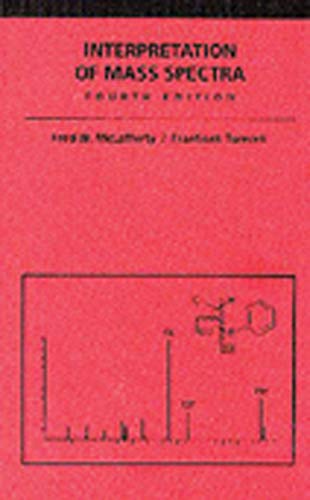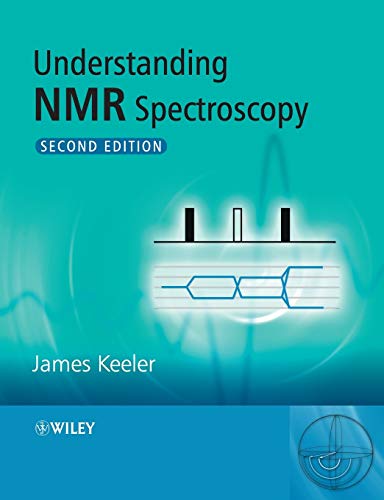(Part 2) Best analytical chemistry books according to redditors
We found 118 Reddit comments discussing the best analytical chemistry books. We ranked the 48 resulting products by number of redditors who mentioned them. Here are the products ranked 21-40. You can also go back to the previous section.




















This is a great question! I just looked through all of my standard analytical chemistry textbooks ( Hargis, 1988 - my favorite btw; Hage, 2011; Skoog, 2000 ), and all of them point out in no uncertain terms that the calibrated volume is that which is delivered with no additional force applied, and that you should not blow out the drip. However, not a single one offers an explanation why. Come to think of it, I cannot ever remember being offered an explanation why.
My guess would be that it comes down to the required tolerance levels for volumetric glassware. For Class A glassware, this is not a fixed error percentage, but is instead individually defined for each incremental pipette. For example, a 10 mL Class A volumetric pipette must deliver 10±0.02 mL, and a 2 mL Class A volumetric pipette must deliver 2±0.006 mL.
Again, my guess would be that the drop trapped at the bottom of the pipette is more uniform, or more constant, than the volume would be if you blew it out. More specifically, I mean that you will probably introduce more variation to the actual delivered volume (that reaching your desired container) upon blowing out the drop. The drop is the drop right, so why would it be less variable sitting in the bottom of the pipette? Electrostatic and surface tension interactions are what hold the drop in place. Those forces do not simply go away when you blow the drop out, so what you end up with is small non-uniform drops left behind on the inside of the pipette and potentially even around onto the outer surface.
Obviously, if you were able to cleanly transfer all of the remaining drop from the pipette to the desired container, it would not matter which way you calibrated them. However, it would seem that a puff of air is not sufficient to transfer that liquid in a reliable way.
This would actually make a great undergrad lab experiment: measure the mass of blown out drops from volumetric pipettes to see if in fact there is any statistically significant variation among them.
Absolutely.
Check out The Elements of Statistical Learning and Introduction to Machine Learning.
edit those books are about practical applications of what we've learning to date from the neural network style of pattern classification. So it's not about modeling an actual biological neuron. For modeling of the biology, it's been a while since I futzed with that. But when I wrote a paper on modeling synaptic firing, Polymer Solutions: An Introduction to Physical Properties was the book for that class. Damned if I remember if that book has the details I needed or if I had to use auxiliary materials though.
For pleasure:
Undergraduate
Organic Chemistry as a Second Language, The art of writing reasonable organic reaction mechanisms
Graduate
I would highly HIGHLY recommend Understanding NMR Spectroscopy by James Keeler. It breaks down the physics of NMR really well and explains how many experiments work. It's also written really well and it's almost funny at times. Keeler does a good job of writing it as if he's talking to you personally. And the author provides a link in the foreword to a free PDF of the solutions manual!
Great learning exercise. I'm afraid you might have a lot of work ahead of you though, given your background and depending on how efficient you'd like your code to be. All your problems won't be solved by simply tossing your code onto a GPU :)
You'll quickly discover that computational chemistry is just linear algebra in disguise, and there are lots of tricks to do computationally efficient linear algebra.
"Handbook Of Computational Quantum Chemistry" has pseudocode about implementing QC algorithms, and I'm sure there are other textbooks out there too that have pseudocode. As r4b00f pointed out, you can also crawl through source code (Hint: check github 1, 2).
GPUs is another story. Some aspects of HF/DFT have been implemented on GPUs in TeraChem by the Martinez group. It's closed source but they have papers on it once you get a little more math background (1,2,3).
Bard and Faulkner is truly the greatest single source of electrochemical fundamentals.
As an addendum, you might also want to look into Handbook of Electrochemistry edited by Zoski. HoE is more of a practical guide that compliments B&F well.
Another good book is Electroanalytical Techniques... edited by Kissinger and Heineman. Also very practical.
Here are my top three textbook choices:
This is a great book for how to actually do organometallic syntheses. I've followed several procedures in the book, and they work well / are quite descriptive.
I''ve taken two organometallic courses that use Crabtree. So I think this is a great book to learn organometallics. Definitely more organometallic than Miessler and Tarr.
A few of my friends have the new Hartwig book which looks awesome. I haven't read it yet, but in my opinion its going to surpass Crabtree as the textbook of choice for organometallics classes in the next few years.
HA! interesting, I'm in the opposite position... everywhere I'm looking wants a chemical engineer, not a chemist! We should... mind meld.
Short of that though, I highly recommend Chemical Analysis. The book is clear and well written with lots of pictures and diagrams. Give advantages and disadvantages of each different technique. I've got a PDF copy of the book somewhere. PM me if you want it.
I'm not sure these are directly applicable, but these some thoughts popped in to my head after reading your post. I'm linking to pages outlining the relations I mention:
Number of nitrogens comes into play, functional groups, ionization method, mass resolution...
You need a book. I recommend Mass Spectrometry: Analytical Chemistry by Open Learning. Its a little pricey, but I used it in class, and still use it as a desk reference. Also, every other book in this series that I have read has been awesome!
You really do not have enough time but before my end of semester ACS test I re-read this book.
Being quant you have to be able to use the equations though.
Mass Spectrometry: Principles and... https://www.amazon.com/dp/0470033118?ref=yo_pop_ma_swf
I work in research with multiple mass spectrometers and various ionization methods and this book does a great job of breaking down principles and data segments.
Hello fellow STEMy's, can anyone help me find this analytical chemistry book for a cheaper price? Thank you in advance.
http://www.amazon.com/Solutions-accompany-Christians-Analytical-Chemistry/dp/1118752090
For Mass spectroscopy: https://www.amazon.com/Interpretation-Mass-Spectra-Fred-McLafferty/dp/0935702253
Standard solutions are prepared in their approximate concentrations and are then standardised against recognised primary standards.
The primary standards are all very pure chemicals that can be further purified by drying in an oven and cooling down in a vacuum desiccator over phosphorus pentoxide.
Primary standards for acids, alkalis and oxidising agents are anhydrous sodium carbonate, potassium hydrogen phthalate anf potassium iodate. In industry you use these so frequently that you get to know their molecular weights by heart.
Once you have standardised solutions of acid, alkali and sodium thiosulfate you use these to standardise other working solutions, so that you have a hierarchy of standards, with the primary standards being the most reliable.
Edit: reference Vogel's Textbook of Quantitative Chemical Analysis, the bible when I was educated.
There’s a nice correlation table in Silverstein that will help you predict pretty much any chemical shift. Check your Chem Library.
https://www.amazon.com/Spectrometric-Identification-Organic-Compounds-Silverstein/dp/0471634042
https://www.amazon.com/Modern-Practice-Chromatography-Robert-Grob/dp/0471229830
Good book.
Agilent (the biggest GC manufacturer) has a ton of videos and such on their website too. Agilent.com
found the book:
https://www.amazon.com/Handbook-Analytical-Derivatization-Reactions-Daniel/dp/047103469X/ref=sr_1_1?ie=UTF8&qid=1492205573&sr=8-1&keywords=Handbook+of+Analytical+Derivatization+Reactions
I actually did undergrad at iupui. Our second analytical semester was basically an instrumental course. Didn't really go into circuit level stuff but we did cover a bunch of the instruments pretty well.
Here is the book we used for it.
https://www.amazon.com/Quantitative-Chemical-Analysis-Loose-Leaf-Budget/dp/1429263091